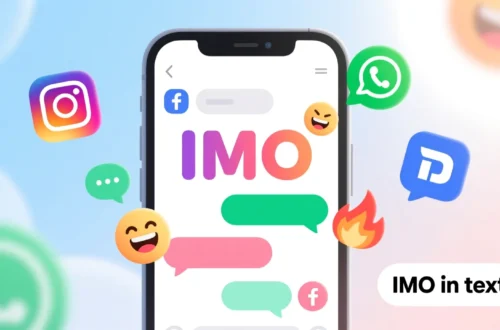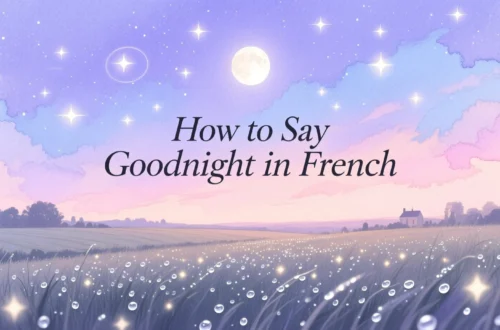Picture yourself strolling through a sunlit plaza in Madrid, where a passerby smiles and says, “Buenas tardes.” That simple phrase, “good afternoon,” radiates warmth and connection. Across the globe, this midday greeting varies, yet it universally conveys friendliness and respect, tailored by each culture’s unique rhythm.
Whether it’s a cheerful “Selamat siang” in Indonesia or a melodic “Bona tarda” in Catalonia, saying “good afternoon” bridges moments of the day with kindness. Let’s explore how people worldwide express this greeting and what it reveals about their cultures.
Reference Table: “Good Afternoon” in Different Languages
| Language | Word/Phrase | Cultural/Linguistic Insight |
|---|---|---|
| Spanish | Buenas tardes | Used after noon until evening, formal yet warm in Spain and Latin America. |
| French | Bon après-midi | A polite greeting, often used in formal settings in France. |
| Italian | Buon pomeriggio | A melodic term, common in Italy after midday. |
| German | Guten Nachmittag | Formal and precise, used from noon to early evening in Germany. |
| Mandarin | Xiàwǔ hǎo (下午好) | Means “afternoon good,” a polite greeting in China. |
| Hindi | Namaste (afternoon context) | A general greeting, used with time-specific intent in India. |
| Japanese | Konnichiwa (こんにちは) | Used broadly from late morning to evening, meaning “hello.” |
| Korean | Annyeonghaseyo (afternoon context) | A polite “hello,” used flexibly in South Korea. |
| Arabic | Masa’a alkhair (مساء الخير) | Means “good evening,” used in the afternoon in 20+ countries. |
| Swahili | Habari ya mchana | Means “news of the afternoon,” a friendly greeting in East Africa. |
| Zulu | Sawubona (afternoon context) | Means “I see you,” used flexibly in South Africa. |
| Yoruba | Ẹ káàsán | Means “good afternoon,” a warm greeting in Nigeria. |
| Maori | Kia ora (afternoon context) | A versatile greeting meaning “be well,” used in New Zealand. |
| Hawaiian | Aloha (afternoon context) | A multipurpose greeting embodying love and warmth. |
| Cherokee | Osiyo (afternoon context) | A general greeting meaning “hello,” used warmly. |
European Languages: Midday Greetings with Charm
European languages express “good afternoon” with warmth and formality. For instance, in Spanish, “buenas tardes” is used after noon until evening, striking a balance between politeness and friendliness in Spain and Latin America. Meanwhile, French speakers say “bon après-midi,” a refined greeting often heard in formal settings like Parisian cafés. Additionally, Italian uses “buon pomeriggio,” a melodic phrase that feels like a song, common after midday in Rome. In German, “Guten Nachmittag” is precise and formal, used from noon to early evening, reflecting Germany’s structured culture. Thus, these greetings blend politeness with cultural flair, from Italy’s musicality to Germany’s clarity.
Asian Languages: Harmony in Midday Greetings
Asia’s diverse languages offer unique ways to say “good afternoon,” often tied to harmony and respect. For example, in Mandarin, “xiàwǔ hǎo” (afternoon good) is a polite, structured greeting, reflecting China’s emphasis on formality. In Hindi, “namaste” serves as a versatile greeting in India, used in the afternoon with time-specific intent, accompanied by a respectful bow. Similarly, Japanese uses “konnichiwa,” a broad “hello” that covers late morning to evening, heard in Tokyo’s bustling streets. In Korean, “annyeonghaseyo” is a polite greeting, flexibly used in the afternoon to convey respect. Finally, Arabic’s “masa’a alkhair” (good evening), used in over 20 countries like Egypt and Saudi Arabia, often applies to afternoons, rooted in the region’s warm hospitality. These terms highlight Asia’s range, from formal Mandarin to expressive Arabic.
African Languages: Community in Afternoon Greetings
In African languages, “good afternoon” reflects community and warmth. For instance, Swahili, spoken in over 20 countries like Kenya and Tanzania, uses “habari ya mchana” (news of the afternoon), a friendly greeting that invites conversation. In Zulu, “sawubona” (I see you) is a versatile greeting in South Africa, used warmly in the afternoon. Similarly, Yoruba’s “ẹ káàsán” (good afternoon) in Nigeria conveys respect and positivity, often shared in vibrant markets. These terms, used across diverse African settings, emphasize connection and communal joy, often accompanied by smiles and handshakes.
Indigenous & Island Languages: Warmth in Simple Greetings
Indigenous and island languages express “good afternoon” with simplicity and connection. For example, Maori in New Zealand uses “kia ora” (be well), a versatile greeting that carries warmth in the afternoon. In Hawaiian, “aloha” embodies love and hospitality, used flexibly as a midday greeting. Similarly, Cherokee’s “osiyo” (hello) is a warm greeting in Native American communities, adaptable to afternoon contexts. In Samoan, “talofa” (hello) is used warmly in the Pacific, reflecting communal bonds. Across these cultures, from New Zealand to the Cherokee Nation, “good afternoon” emphasizes unity and kindness, often tied to shared traditions.
Cultural Insights: The Evolution of Midday Greetings
Greetings like “good afternoon” have evolved with cultural practices. For instance, the Spanish “buenas tardes” traces back to medieval courtesies, emphasizing politeness. In Arabic, “masa’a alkhair” reflects hospitality traditions from ancient trade routes. Moreover, in African languages like Swahili, “habari ya mchana” stems from communal storytelling, inviting connection. In Asia, terms like “konnichiwa” align with cultural values of respect and harmony, shaped by centuries of philosophy. These greetings carry histories of trade, migration, and social bonds, uniting people through time.
Proverbs and Sayings: Wisdom of Greetings
- Spanish: “Un buen día comienza con un saludo.” (A good day starts with a greeting.) – Highlights the power of kind words.
- Hindi: “Namaste se dil milta hai.” (Namaste joins hearts.) – Emphasizes connection through greetings.
- Swahili: “Habari njema, maisha mema.” (Good news, good life.) – Ties greetings to positivity.
- Japanese: “Konnichiwa wa kokoro o hiraku.” (Konnichiwa opens the heart.) – Reflects emotional openness.
- Yoruba: “Ẹ káàsán, ayọ wa.” (Good afternoon, joy comes.) – Links greetings to happiness.
FAQs
Why do some “good afternoon” greetings sound similar?
Shared linguistic roots (e.g., Romance languages like Spanish and Italian) and cultural exchanges (e.g., Arabic’s influence on Swahili) create similarities.
What’s the oldest term for “good afternoon”?
Terms like “buenas tardes” in Spanish, rooted in medieval Latin greetings, are among the earliest recorded, dating back centuries.
How do cultures shape the greeting’s use?
Collectivist cultures (e.g., African, Indigenous) use “good afternoon” to foster community, while individualistic cultures (e.g., European) emphasize personal courtesy.
Conclusion
From “buenas tardes” in Spain to “habari ya mchana” in Tanzania, “good afternoon” weaves a global thread of warmth and connection. Each greeting, whether the respectful “xiàwǔ hǎo” in Mandarin or the heartfelt “aloha” in Hawaiian, reflects cultural values while celebrating our shared humanity. Consequently, these phrases remind us that a simple midday greeting can brighten someone’s day, uniting all people in kindness. How do you say “good afternoon” in your language, and what does it mean to you? Share your stories below—we’d love to hear your voice!





